Part One – A Difficult and Multi-Faceted Problem
Marineland Canada confirmed this week that it will re-open on May 21st. Protestors will be out in force, but we had hoped that this year it wouldn’t be necessary. Its ownership should have realized by now that the game is up, and this archaic business model has had its day. Really though, one has to wonder how it must feel to continue to squeeze a few dollars of profit out of an activity which is now illegal in Canada, and one which has been banned for everyone else – and widely recognized as unethical and exploitative. Would you feel good going to work every day?
It gets one to thinking about just how difficult it is to dismantle an institution as monstrous – and with so many complicating factors – as the dolphin captivity industry. It’s not surprising that existing aquaria would be allowed to ‘grand-father’ their whales when captivity is made illegal. France did the same, and I expect so will Spain when this hoped-for change comes to their country within a couple of years. It’s worth noting, however, that the French also took the time to not only ban captivity, but to enforce higher standards at those existing facilities which would be permitted to continue operations. This Canada did not do, much to the detriment of Marineland’s whales, and much to Canada’s shame.
Before we get deeper into that however, a couple of other interesting developments from around the world…
This from Action for Dolphins @Act_4Dolphins this week…
GREAT NEWS – Shinagawa Ward, Tokyo will not resume Shinagawa Aquarium’s captive dolphin show once the aquarium reopens in 2027. The decision to shut it down has been due to changing opinions on animal captivity & heavy financial burden #EmptyTheTanks
And this from Marine Connection (marineconection.org) …
Speak Out – demand the UK upholds standards for captive dolphins & whales
Since 1993, the UK has had no captive dolphins or whales and since that time, has gained worldwide respect with regards to this and also for the country having some of the strictest legislation on the keeping of cetacea for public display, as per Annex G, Supplement to the Secretary of State’s Standards of Modern Zoo Practice, Additional Standards for Cetacean Keeping (1990).
The Department for Environment, Food and Rural Affairs (DEFRA) has launched a consultation on behalf of the English, Welsh, and Scottish Governments seeking public comment on a new review of the Standards of Modern Zoo Practice for Great Britain, which will replace the current standards. Within the new standards, all marine mammals have been combined under Appendix 1.7, and Marine Connection has concerns that this change could potentially open the door for captive cetacean display to be reintroduced, provided relevant guidelines are followed.
The first is an extremely hopeful sign from a country where dolphins have fared abysmally, and where we have a very long way to go. The second is a serious warning from a country where things have gone as well as they can possibly go – with no captive cetaceans in almost 30 years. Both serve to illustrate just how much needs to get done to truly rid ourselves of this menace to both justice and decent treatment of fellow sentient beings.
The news from Shinagawa, Japan, is actually much bigger than it appears at first glance. Japan is among the nations with the highest number of dolphinaria in the world, and anti-captivity sentiment in that country has only surfaced here and there, in small pockets, and with a relatively tiny number of courageous and vocal opponents. Remember that this is a nation where even a case as egregious as Honey the dolphin’s did not prompt enough public backlash to push lawmakers to act. (She had been held in complete isolation in an abandoned facility for two years, until her death.) And of course there is the ongoing horror of Taiji, and the recent restoration of commercial whaling.
But this week’s announcement that a major park will not go forward with the resumption of dolphin shows is somewhat like a dam bursting. When the first one of these happens, a number of others are sure to follow in rapid succession. It means that public sentiment has reached a point where the industry can no longer contain it indefinitely. We are delighted with this news, and with what it may portend.
What this speaks to is the crucial importance of public awareness. It takes a long time to build, and we need to thank the tireless efforts of AFD, Life Investigation Agency (LIA), Dolphin Project, and many others for raising it this far in Japan.
The UK development illustrates an entirely different aspect of the problem. There, public sentiment has been firmly opposed to the practice of holding cetaceans in captivity for a long time. We’ve been tempted to believe that a return of this industry was inconceivable. Now, we suddenly are struck with the realization that this is not so. What this tells us is that we can’t overstate the importance of legislation to effect a permanent legal ban, such as we now have in Canada. We must not leave the door open, lest this vile form of ‘entertainment’ ever rear its ugly head somewhere down the road.
So let’s think about it this way, and ask the question “whose situation is preferable, Canada’s or Britain’s?”. We may be tempted to say Britain, given that the nightmare there may well be over already, and the threat now on the horizon may never come to pass. In Canada, by contrast, the suffering of some 40 individuals is likely to go on for years to come, until the last either dies or – hopefully – is released to a sanctuary. (Something Marineland hasn’t seemed receptive to up to now.) We also have to remain vigilant that the sale of any whales that gets approved for export includes the requirement that these not be part of any captive-breeding programs, lest the problem simply be perpetuated somewhere abroad. Essentially, we have much to do before the injustice of captivity, and the suffering it engenders, is truly over in this country.
On the other hand, what we in Canada know for sure, and Britain does not yet, is that once Marineland finally closes its doors, the nightmare of cetacean captivity will be truly over. Thanks to S-203, passed in 2019, there will never again be such a place on our soil, ever. Truly a light at the end of the tunnel.
We’ve known for a long time that the key to putting an end to whale and dolphin captivity is a general raising of public awareness. The most important thing working in our favour is the fact that an overwhelming majority of people will not remain indifferent when presented with an accurate picture of the realities behind this industry – including what life in captivity is actually like for a being of this nature. Added to that is the fact that so many that institutions like Marineland and SeaWorld might consider a ‘target market’ are people who purchase a ticket in order to see (or interact with) an animal for which they have a certain level of wonder and appreciation. Such people are much less likely to approve of the reality of the animal’s suffering once they’ve been made aware of it.
So that’s the key, and the UK was among the first to achieve it, which is a real credit to the level of care and compassion for other species that runs through that culture. Japan will get there one day too. We hope sooner than later, but in the meantime we’ll continue to patiently and persistently get our message out. One day, demand will no longer be sufficient to drive the establishment of new dolphinaria, and existing ones will start to close, just as they will everywhere else, eventually. At some point, if all goes well, Japanese lawmakers will even take notice that voters want to see change.
Again, ending cetacean captivity by enacting a permanent legislative ban is preferable to simply doing it by convention. Let’s not forget that our governments often permit (or even subsidize) industries for which most residents no longer hold much love. In Italy for example, recent polling demonstrated that the overwhelming majority of Italians are opposed to keeping dolphins in captivity, yet three of these awful places continue to operate in that country. In other words, public opinion often comes in second to influential lobbyists when governments make decisions. Better to have the ban codified into law.
It’s a win for justice and compassion when either of these developments takes place – a well-informed, highly-aware public & a successful piece of legislation – but hopefully we get both. Furthermore, ideally we get one or both before that given country even has captive cetaceans in the first place. Otherwise, we will have a situation like the one that exists in Canada now. Rehabilitation for life back in the wild is difficult, expensive and takes time. In the majority of cases it won’t even be possible, so the whales must have some place to go. That means we need to build sanctuaries. The damage created when we deprive such an intelligent, complex being of its liberty is enormous, and difficult to undo. We’ll be tremendously better off in places where captive facilities never come into existence to begin with.
Next week part 2 of this post – A Case of Intolerable Injustice Persists on Canadian Soil. We’ll do a deeper dive into the situation at Marineland today, and why the time has come to shut it down now!
For The Orca’s Voice,
Jason, Canadian Cetacean Alliance



Leave a Reply